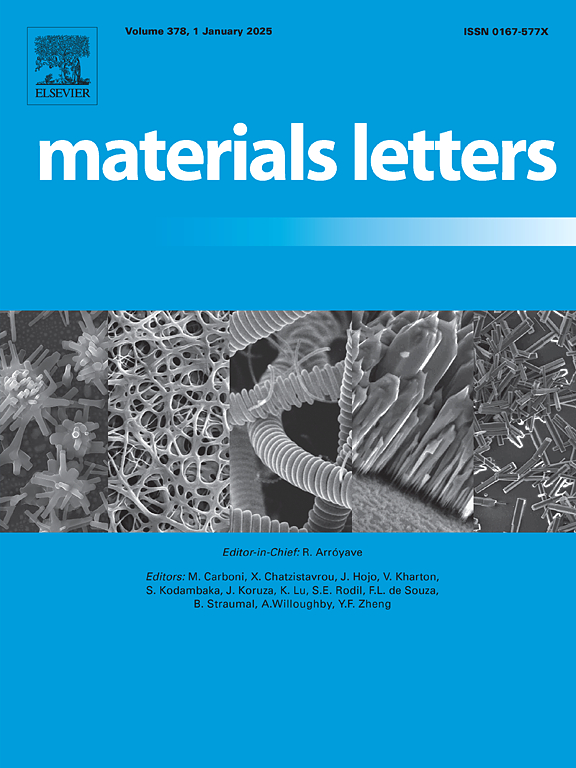Unveiling the role of heat treatment approaches in tailoring corrosion performance of laser powder-directed energy deposited SS304
IF 2.7
4区 材料科学
Q3 MATERIALS SCIENCE, MULTIDISCIPLINARY
引用次数: 0
Abstract
This study investigates the effect of different post-processing heat treatment approaches on the corrosion behavior of Laser Powder-Directed Energy Deposited (LP-DED) SS304. Samples were fabricated using optimized LP-DED parameters: laser power of 400 W, scan speed of 800 mm/min, feed rate of 4 g/min, 0.6 mm beam diameter, and 33 % track overlap.Electrochemical analysis revealed significant differences in corrosion performance depending on the applied heat treatment approach. This treatment resulted in changes to residual stress, microstructure, and oxide layer characteristics which together influence the corrosion rate (CR). The stress-relief annealed (SRA) samples significantly improved corrosion resistance by up to 90 % compared to the as-built condition, while preserving the fine microstructure formed during the LP-DED process and maintaining a stable protective oxide layer. Solution treated and different quenched samples exhibited varying CR depending on the cooling rate and resulting coarse grain structure. These findings highlight the significant influence of post-processing heat treatments on corrosion behavior and microstructural characteristics.
揭示热处理方法在激光粉末定向能沉积SS304腐蚀性能中的作用
研究了不同的后处理热处理方法对激光粉末定向能沉积(LP-DED) SS304腐蚀行为的影响。采用优化的LP-DED参数制备样品:激光功率400 W,扫描速度800 mm/min,进给速度4 g/min,光束直径0.6 mm,磁道重叠33%。电化学分析表明,不同的热处理方式在腐蚀性能上存在显著差异。这种处理导致残余应力、微观结构和氧化层特征的变化,这些变化共同影响腐蚀速率(CR)。经过应力消除退火(SRA)处理的样品的耐蚀性比原状提高了90%,同时保留了LP-DED过程中形成的精细微观结构,并保持了稳定的氧化保护层。固溶处理和不同淬火后的样品显示出不同的CR,这取决于冷却速度和产生的粗晶粒组织。这些发现强调了后处理热处理对腐蚀行为和微观组织特征的显著影响。
本文章由计算机程序翻译,如有差异,请以英文原文为准。
求助全文
约1分钟内获得全文
求助全文
来源期刊

Materials Letters
工程技术-材料科学:综合
CiteScore
5.60
自引率
3.30%
发文量
1948
审稿时长
50 days
期刊介绍:
Materials Letters has an open access mirror journal Materials Letters: X, sharing the same aims and scope, editorial team, submission system and rigorous peer review.
Materials Letters is dedicated to publishing novel, cutting edge reports of broad interest to the materials community. The journal provides a forum for materials scientists and engineers, physicists, and chemists to rapidly communicate on the most important topics in the field of materials.
Contributions include, but are not limited to, a variety of topics such as:
• Materials - Metals and alloys, amorphous solids, ceramics, composites, polymers, semiconductors
• Applications - Structural, opto-electronic, magnetic, medical, MEMS, sensors, smart
• Characterization - Analytical, microscopy, scanning probes, nanoscopic, optical, electrical, magnetic, acoustic, spectroscopic, diffraction
• Novel Materials - Micro and nanostructures (nanowires, nanotubes, nanoparticles), nanocomposites, thin films, superlattices, quantum dots.
• Processing - Crystal growth, thin film processing, sol-gel processing, mechanical processing, assembly, nanocrystalline processing.
• Properties - Mechanical, magnetic, optical, electrical, ferroelectric, thermal, interfacial, transport, thermodynamic
• Synthesis - Quenching, solid state, solidification, solution synthesis, vapor deposition, high pressure, explosive
 求助内容:
求助内容: 应助结果提醒方式:
应助结果提醒方式:


